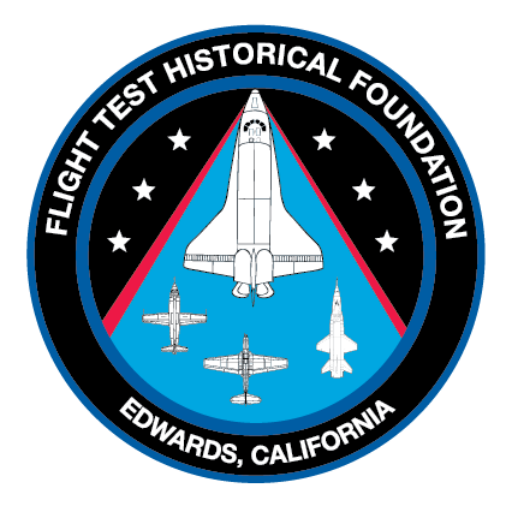KENNETH J. SZALAI
PRESIDENT, AEROSPACE SERVICES INTERNATIONAL, LLC

2003-Present
Mr. Szalai, President, ASI LLC, a technical, management, and business development consulting firm, with work in the areas of government and commercial aviation and space programs.
He has served as a senior advisor to companies and agencies in the United States Government in the areas of aviation, space transportation, national security, and advanced R&D. Programs supported as advisor included: the NASA Space Launch Initative, a Large DoD Advanced Aircaft Development, A NASA Space Station Crew Transport Vehicle, and the B747 Stratospheric Observatory for Infrared Astronomy (SOFIA), and Special Projects.
He was a member of the Johns Hopkins Applied Physics Lab Civilian Space Program Management Council during planetary missions to Mercury and Pluto. He led senior technical support teams for major government programs. He served on the Scaled Composites Board under Presidenr Burt Rutan during the “SpaceShipOne” program that won the $10M X-Prize. He initiated and supported a NASA high speed, high temperature testing project between NASA and the Italian National Aerospace Research Center.
1998-2002 IBP Aerospace Group/IBP Aircraft
Co-Founder and President, IBP Aerospace Group, Inc., Hartford, CT. Led development and testing of ejection seat systems for US military aircraft based on Russian advanced escape system technology, for the Air Force Research Laboratory, and the US Navy.
1990-1998 Director of the NASA Flight Research Center (now named after Neil Armstrong)
Responsible for the direction, management, and safety of flight of NASA’s advanced experimental flight research and test programs in support of civil and and military programs in aerodynamics, propulsion, aerothermodynamics, structures, flight controls, and avionics. He had management responsibility for teams for several “X-Aircraft” programs including the US-German X-31, Boeing X-36 unmanned aircraft, X-38 Crew Return Vehicle experimental aircraft, special flight tests on the Mach 3 SR-71, other testbed aircraft and the SCRAMJET-powered X-43 “Hyper-X”. Szalai had responsibility for NASA Armstrong support of space shuttle orbiter landings at EAFB
He led large teams on many experimental flight research programs, including the joint US-Russian high-speed flight research program which he initiated, using the Russian Tupolev Tu-144. This successful flight and ground test program involved an international Team composed of NASA, Boeing, General Electric, Pratt & Whitney, IBP Aircraft, Tupolev, and Kuznetzov. The program was chartered under the US-Russian Gore-Chernomyrdin Accords. He was appointed by NASA Administrator Daniel Goldin to Chair the joint NASA-Italian Space Agency Shuttle Mission Failure Board for the joint Electrodynamic Tether experiment on STS-46; and to Chair an Agency Assessment Team for the Moon-Mars Exploration Enterprise under Associate Administrator Dr. Michael Griffin.
1981-1990 Director of Research Engineering at the Flight Research Center.
Mr. Szalai had technical and management leadership responsibility for aerodynamics, propulsion, structures, and flight controls experimental flight research programs such as the X-29 Forward Swept Wing, Integrated Digital Engine Controls, Supersonic Laminar Flow, Super Maneuverability, advanced digital avionics, high speed and high-altitude unmanned aircraft, and the Pegasus flight program with startup Orbital Inc. He managed the Flight Loads Laboratory, the large Research Aircraft Integration Facility, the Simulation and UAV control facilties, Data Analysis Facilty, and the Western Aeronautical Test Range.
He started and led the development of joint aerospace programs with other NASA Centers, the DoD, aerospace companies, and foreign partners. He served as the NASA Representative to the NATO Advisory Group for Aerospace Research and Development, and co-authored the NATO report, ‘Validation of Flight Critical Digital Flight Control Systems.’ He managed the NASA technical teams on the series of Advanced Fighter Technolgy Integration (AFTI) Projects in collaboration with the Air Force Research Laboratory who was Program Lead.
1964-1981 Research Engineer and Research Group Leader
Mr. Szalai conducted research in digital flight control systems design and development, integrated flight/propulsion systems, variable stability aircraft technology, flying qualities, flight critical software verification and validation methods, analytic redundancy management, and motion cue effects.
Mr. Szalai was the Chief Engineer on the world’s first digital fly-by-wire aircraft (F-8 DFBW), which flew in 1972 using the Apollo Lunar Module Digital GNC System; and in 1976 with a triplex fail-operational DFBW system using production aircraft digital computers. He designed flight control laws for both phases, and also invented a ‘resident back-up software system’ which was used on production aircraft for surviving common-mode software faults in DFBW flight control systems.
Honors and Awards
Mr. Szalai received the Presidential Meritorious and Distinguished Rank Awards, the NASA Distinguished Service Medal, the NASA Outstanding Leadership Medal, and the AIAA Wright Brothers Lectureship Medal. He is a co-recipient of the Theodore Von Karman Award for International Cooperation for his work on the US-German X-31 aircraft program. He was inducted into the Space Technology Hall of Fame in 2010 for his work on Digital Fly-by-Wire Technology. He was awarded a NASA Public Service Medal for contributions to the NASA airborne science program (Global Hawk). He holds degrees in Electrical Engineering and Mechanical (Aeronautical) Engineering. He is a Fellow of the American Institute of Aeronautics and Astronautics (AIAA) and a Distinguished Lecturer for the AIAA. He has authored 25 NASA Reports and Papers.

